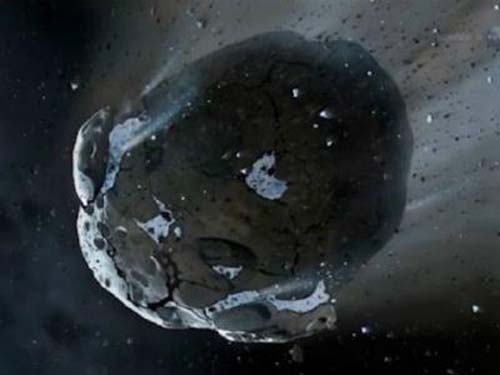Washington: Classified as “potentially hazardous”, the near-Earth asteroid 3200 Phaethon has a diameter of about six kilometres — roughly one kilometre larger than previous estimates, new radar images obtained by the Arecibo Observatory in Puerto Rico suggest.
The radar images obtained during the asteroid’s close approach to Earth in December are the highest-resolution images of the object to date, NASA said on Friday.
Near-Earth objects are classified as potentially hazardous asteroids based on their size and how closely they can approach Earth’s orbit.
Observations of Phaethon were conducted at Arecibo from December 15 through 19.
At time of closest approach on December 16, the asteroid was about 10.3 million kilometres away, or about 27 times the distance from Earth to the Moon.
The encounter is the closest the asteroid will come to Earth until 2093, NASA said.
The new images revealed that the asteroid is roughly ball-shaped and has a large concavity, or depression, at least several hundred metres in extent near its equator, and a conspicuous dark, circular feature near one of the poles.
“These new observations of Phaethon show it may be similar in shape to asteroid Bennu, the target of NASA’s OSIRIS-REx spacecraft, but more than 1,000 Bennus could fit inside of Phaethon,” said Patrick Taylor, a scientist at Universities Space Research Association (USRA), Columbia, Maryland.
“The dark feature could be a crater or some other topographic depression that did not reflect the radar beam back to Earth,” Taylor, who is also the group leader at Arecibo Observatory Planetary Radar, said.
Tracking and characterising potentially hazardous asteroids is a primary mission of NASA’s Planetary Defense Coordination Office.
Radar is a powerful technique for studying asteroid sizes, shapes, rotation, surface features and roughness, and for more precise determination of their orbital path, when they pass relatively close to Earth.
The Arecibo Observatory Planetary Radar has returned to normal operation after several months of downtime since Hurricane Maria struck the island of Puerto Rico in September.
“We have been working diligently to get it back up and running since Hurricane Maria devastated Puerto Rico,” said Joan Schmelz of USRA and Deputy Director of Arecibo Observatory.
IANS

